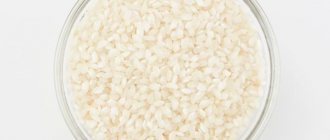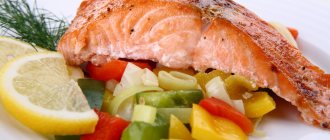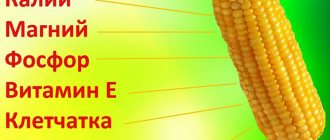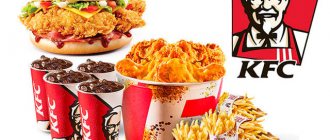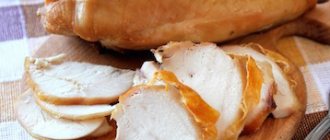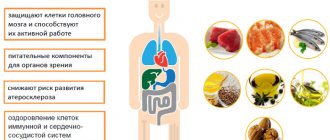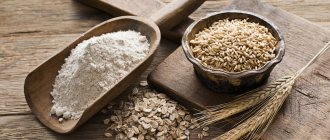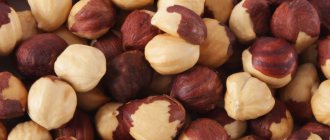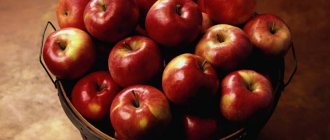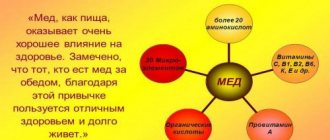Man has always tried to minimize the expenditure of his time in order to accomplish as much as possible during the daylight hours. This also applies to the speed of food preparation: this is how dry breakfast cereals and snacks were born, this is how frozen semi-finished products appeared - nuggets, dumplings, dumplings and the like, this is how noodles appeared, which do not require long cooking and are loved for a wide range of uses. It could be eaten like pasta as a side dish, and could be added to soups, casseroles, and even salads. It even allowed for simple steaming under the lid, which would not have happened with Italian spaghetti. And therefore, due to its such active use, it has become important to know how many calories are in noodles, whether it differs in this regard from spaghetti and other pasta, and what harm or benefit it brings to the body.
But in order to most accurately answer how many calories are in noodles, it is necessary to clarify what specific noodles we are talking about. There are four main types of this product, differing in their composition, and therefore their effect on the body, and the calorie content of the noodles. Rice, buckwheat, legumes, wheat and even egg - two of these types belong to European cuisine, three came from Asian countries, but have taken root very well in other countries.
Japanese noodle and seafood salad
Fresh lime and orange are combined with green onions to create a tangy sauce. Mix fresh sauce with shrimp, crabmeat, noodles and other ingredients to create a delicious salad for a healthy diet. Its piquant taste will make a person who is obese or overweight forget about the coveted chocolate bar hidden in the depths of the kitchen cabinet.
The nutritional value:
- 363 kcal;
- 7 g fat;
- 50 g carbohydrates;
- 25 g proteins;
- 354 mg sodium.
You will need for cooking:
- 6 tablespoons fresh lime juice;
- 5 tablespoons of fresh orange juice;
- 4 small onions (chopped);
- 2 tablespoons rice vinegar;
- 1 tbsp. l. dark sesame oil;
- 1/4 tsp. red pepper (flakes);
- 2 cups carrots (grated);
- 200 g noodles;
- 200 g peeled and boiled shrimp;
- 200 g crab meat;
- a tablespoon of mint and cilantro leaves;
- 4 tbsp. l. sesame (toasted).
Preparation procedure:
- whisk together first 6 ingredients in a large bowl;
- gently stir in carrots, shrimp, crabmeat, mint and cilantro;
- Boil the noodles, drain and immediately place in a serving bowl;
- add 2 tablespoons sesame seeds, season to taste and stir;
- sprinkle with remaining 2 tablespoons seeds.
This dish will decorate the collection of those who collect healthy recipes. Just nine ingredients and a love of pasta are all you need to create a family-friendly lunch or dinner.
If you omit the mascarpone, the recipe will become vegetarian, and its calorie content will be further reduced.
The nutritional value:
- 354 kcal;
- 11 g fat;
- 48 g carbohydrates;
- 12 g proteins;
- 125 mg sodium.
You will need for cooking:
- 350 g noodles;
- 1 tbsp. l. olive oils;
- 500 g chopped mushrooms;
- 1 chopped onion;
- 1 tsp. dried thyme;
- 1 tsp. chopped garlic;
- 3/4 glass of white wine;
- 1 cup of water;
- 3 tablespoons mascarpone.
Preparation procedure:
- boil the noodles;
- heat 1 tbsp. l. oil in a large nonstick skillet over medium heat;
- add chopped mushrooms, chopped onion, thyme and minced garlic;
- fry until golden brown (7 minutes);
- add white wine;
- pour in water and add 3 tablespoons of mascarpone;
- bring to a boil, cook for a couple more minutes, reducing the heat;
- Serve sprinkled with herbs.
Exotic shirataki noodles appeared in our stores quite recently, although in the East this product has been known, as some researchers believe, for almost two thousand years. These noodles bear little resemblance to their European relative, but (sorry fans of Italian spaghetti) this is where all of its charm and beneficial properties lie.
How to make buckwheat noodles yourself
If you decide to try making soba yourself, then be prepared for a decent load on your hands and forearms. Buckwheat flour is very capricious, the dough will crumble a lot and you need to spend enough time to knead it properly.
- Sift buckwheat flour into a bowl, add rice or wheat flour if desired. For pasta to be called “soba”, there must be at least 30% buckwheat. Add hot water to boil the flour a little, stir with a spoon.
- Continue kneading the dough with your hands, it should not crumble and be elastic. Cover it with a damp towel and set it aside for half an hour to soften it.
- Divide all the dough into small pieces. Take one and roll out a thin sheet, fold it into quarters and roll it out again. The thickness of the sheet should be no more than one and a half millimeters.
- Dust the finished sheet with flour and set aside to dry. Do the same with the rest of the dough.
- When all the layers are dry, they need to be thoroughly sprinkled with flour again, folded together 3-4 pieces and rolled into rolls.
- Using a knife, cut the rolls into slices 5-10mm thick. Shake the slices, they will separate from each other and you will get strips of pasta.
- The noodles can be boiled immediately or dried and saved for later. You can dry it in the oven for no more than two hours at a temperature of about 60 degrees, or simply on the table, then it will take about ten hours.
What is shirataki
Shirataki, or Japanese noodles, is a popular product of oriental cuisine. It is a long and thin translucent white noodle, without taste or distinct odor. Unlike traditional noodles, Japanese noodles are made not from wheat flour, but from the root of the konjac plant, also known as konnyaku.
Konnyaku is a heat-loving crop, distributed mainly in Japan, China and Southeast Asia. Usually grows in the mountains. Due to its unusual appearance, this plant received other popular names. The local population calls amorphophallus konjac the devil's tongue or snake palm. The root of this plant, which is actually used for shirataki, is shaped like a large beet (can grow up to 4 kg). It can be consumed both raw and processed. Typically, young tubers are dried and ground into flour, from which shirataki is then prepared. Snake palm roots are composed almost entirely of poorly digestible fibers. For this reason, Japanese noodles have gained incredible popularity among people watching their figure.
Classification of pasta
First of all, they are divided into several groups according to the type of flour:
- A – from durum varieties;
- B – with high glassiness from soft varieties;
- B – soft varieties.
You can eat pasta while losing weight, but only from hard varieties. What is glassiness? This parameter determines the ratio of proteins and starch, which is very important for slimness. Grains with high glassiness have a white, slightly transparent color (which is why they got their name) and a relatively high protein content. Wheat, which is high in starch, is poor in protein and has a yellowish or brown color.
More on the topic >> How to lose belly fat after the age of 40, 50, 60 years
What is the difference between hard and soft varieties? The main difference is the ratio of proteins and starch, which greatly affects the strength of the grains (hence the name). The high protein content makes wheat harder in consistency and valuable in nutritional qualities, as well as less calorie. Durum wheat is considered to have a protein content above 17%.
A little humor on the topic:
https://youtu.be/Yh1pPXRtm4c
There is also a classification by type of flour, but here too the key factor is the amount of starch and proteins:
| Variety | Starch | Protein | Ash content | Cellulose |
| Higher | 79-80% | 10-14% | 0,55% | 0,1-0,15% |
| First | 75% | 13-15% | 0,75% | 0,27-0,3% |
| Second | 70-72% | 13-16% | 1,1-1,2% | 0,7% |
| Durum wheat flour | 54-66% | 17-21% | 1,7-1,9% | 2,3% |
What is ash content? This is the weight of solid particles in a mass of flour. First of all, this includes various minerals, but also includes grain flakes, germs, and particles of stems. Obviously, the lower the grade, the more proteins, minerals and healthy fiber it contains. But the record holders are the hard varieties, so these are the types of pasta you can eat while losing weight.
In addition, there is a classification according to form and method of preparation:
- spaghettini, capellini, vermicelli - thin and long products reminiscent of spaghetti, but with a softer and more delicate taste;
- spaghetti – thin and long, can be bought at any store;
- fettuccine, lenguine, tagliatelle - spaghetti of medium length, while they are flat and wide, reminiscent of ribbons;
- penne, rigatoni, ziti - short tubular noodles with a hollow core;
- cannelloni, manicotti - tubular large pasta with a radius of 1-2 cm. The inside is filled with various fillings: meat, sauces and herbs;
- fusilli, rotini, gemelli - screw-shaped pasta;
- farfalle - in the form of a butterfly;
- lasagna - flat in the shape of a square pancake, they are laid in layers alternately with some kind of filling (meat, herbs, sauce) in the form of a layer pie;
- pastina, orzo, ditalini - pasta in the form of grains.
Nutritional value and chemical composition
In Asian countries, shirataki is one of the national dishes and is almost as popular as . If someone tried to find another name for Japanese noodles, more familiar to the European ear, then it would probably not be better to find a literal translation of the original name. “White waterfall” is exactly how the Japanese word “shirataki” is translated. The product really looks like the cascading waves of a waterfall. White, translucent thin pasta, almost tasteless, but have a characteristic smell. This is explained by the fact that shirataki contains only two components: konnyaku root and. Some manufacturers also add . The resulting mixture is boiled and then poured into noodle or rice molds.
Shirataki contains a lot of water - almost 97% of the total composition, and only 3% .
These are the lowest calorie noodles in the world. It seems that only water contains fewer calories. 100 g of noodles contain only 9 kcal. This is almost 12 times less than in green, and we dare to remind you that it is considered very low-calorie. But in fairness, it must be said that Japanese noodles lack not only calories. It also does not contain vitamins, minerals (well, unless you add them during the cooking process), but there is a huge amount of fiber and a little. But don't be afraid. Shirataki contains only 2.3 g of carbohydrates per 100 g of product, which will not affect your figure at all.
Separately, it is necessary to say about the characteristics of fiber obtained from snake palm. It is an insoluble substance that, when it enters the intestines, swells, creating a feeling of fullness in the stomach. But besides this, while konjac fiber remains in the human body, it absorbs toxins, excess and, and then is completely eliminated.
Features of eating buckwheat noodles
The range of uses of soba in cooking is very wide. It is equally good served cold or hot, at any time of the year, as an independent dish, as a side dish, in salads or soups, seasoned with or without sauce.
Anyone can cook soba, but it will require a lot of effort first to mix the dough well, and then dry the noodles. Now in any store you can find a completely finished product, however, you need to pay attention to the composition. Many manufacturers, for example, add sugar to enhance the taste, which increases the glycemic index of buckwheat, so diabetics should be doubly careful.
Similar articles
Chia seeds - benefits and harm, as well as how to use them for health and general tone (+ for weight loss)
2020-04-24
What is couscous cereal, and how to cook it correctly (+ benefits and harm)
2019-03-07
Benefits of Shirataki
- reduces cholesterol levels in the body;
- improves digestion;
- reduces concentration in the bloodstream;
- affects intestinal motility.
Is this really the case or is it just a trick by advertisers? To understand why Japanese noodles are useful, you first need to take a closer look at them. Apart from a special type of fiber, there is nothing else in shirataki. But it is fiber that provides the main benefits of this product. Although the average serving of Japanese noodles contains no more than 3 g of fiber, this is enough for the body to feel its benefits.
Dietary fiber obtained from konjac tubers helps lower cholesterol and blood sugar. This means that Japanese noodles are not only allowed, but also beneficial for people with diabetes and certain cardiovascular diseases. Fiber-rich snake palm noodles are an excellent way to improve intestinal motility. For this reason, shirataki is beneficial for people with constipation, hemorrhoids, or diverticulitis. Speaking of intestines. Researchers have proven that this product of Japanese cuisine, or rather the fiber in its composition, has prebiotic properties. In other words, it promotes the formation of proper microflora in the intestines and prevents dysbiosis.
Do not forget that Japanese noodles do not contain wheat flour, which means they do not contain gluten, which can cause allergies in some people. Thus, shirataki can be a real salvation for people with celiac disease.
Is it possible to eat noodles for weight loss?
Everyone knows that pasta and baked goods are the enemies of a good figure.
But not all products are equally harmful. Noodles made from wholemeal flour are suitable for weight loss. If her glycemic index is below 50, it will not raise the amount of sugar in the blood, and the pancreas will not release much insulin. Therefore, excess glucose will not be converted into fat and stored in reserve. So in some cases, you can eat noodles for weight loss.
The secret to eating pasta without harming your figure is this:
- Only products from durum varieties are suitable. This is usually indicated right on the package.
- Do not mix with cheese, store-bought tomato sauce, or mayonnaise.
- They eat noodles only with vegetables or sauces made from them.
- You can't overeat. This rule applies to any food, since too much of any food will compensate for its dietary effect.
- Eating noodles in moderation helps control hunger. It refers to slow carbohydrates that do not provoke a sharp increase in blood sugar, but are gradually digested.
- Weight loss occurs rather slowly, but a long-term effect is guaranteed.
- Noodles improve digestion, strengthen the body's protective functions and improve intestinal motility. Therefore, the result is not only weight loss, but also an even complexion.
- Noodles promote the production of serotonin, the hormone of happiness, so a person is always in a good mood. This means he has greater resistance to stress and depression.
During the noodle diet, it is necessary to include fruits and vegetables, vegetable oil, especially olives and flaxseeds, and seafood in the diet. In this case, white bread, sweets, pastries, alcoholic beverages, store-bought sauces and mayonnaise, sausages, canned food, and marinades should be excluded.
How to lose weight with noodles
If we are talking about ordinary noodles, then no way. But if you replace the traditional product with super-dietary Japanese noodles, then it’s very possible. Some people on the noodle diet won’t even have to radically revise their diet. In order to start the weight loss process, it is enough to replace regular pasta or shirataki.
The most famous weight loss program in which shirataki is held in high esteem is. For people who follow it, shirataki can be consumed in unlimited quantities. By the way, in Japan, more than 200 tons of this “pasta” are eaten annually and, it must be recalled, you rarely see overweight people in this country.
As already mentioned, Japanese noodles contain almost no calories, carbohydrates, fat, sugar, protein or gluten. And those carbohydrates that are in the product are digested very slowly in the small intestine. But the most important thing for those losing weight is that shirataki contains a special type of fiber known as glucomannan. When this substance combines with water, it swells very strongly, increasing to almost 17 times its original volume. In the human body, everything happens approximately the same way, and after eating Japanese noodles, a gel-like mass is formed in the stomach, which maintains saturation for a very long time. In addition, dietary fiber slows down the body's production of ghrelin, also known as the hunger hormone. And by comparing these data, it becomes clear: you can really lose weight very effectively using Japanese “pasta.”
Composition and beneficial properties
This food product is produced from mung bean starch.
They resemble green peas. These beans are mainly grown in India. Funchoza began its march around the world from China, which is why many consider it the national dish of the Celestial Empire. Although Japan and Korea can equally claim the title of homeland of this delicacy.
Sometimes potato, rice or yam starch is used for production, but, of course, this is no longer the original product. In supermarkets, real “glass” mung bean noodles are much more expensive than fake ones.
The composition contains many useful substances; they ensure the full functioning of all organs. It is enough to use the product 1-2 times a week. This helps to improve the health of the body. It is important to remember that it contains little dietary fiber and virtually no amino acids or proteins. You need to think through your menu well.
The healing properties of the Asian product lie in its vitamin and mineral composition. Eating this delicacy promotes:
- cleaning from harmful and toxic substances;
- normalizing blood sugar levels;
- regeneration of skin cells and nerve tissues;
- improving the functioning of the gastrointestinal tract;
- strengthening bone tissue;
- normalization of the psyche;
- replenishing oxygen to body cells;
- reducing the risk of developing cancer.
Harm and side effects of Japanese noodles
Eating too much Japanese noodles can cause diarrhea or bloating in some people. However, shirataki is considered safe to eat in almost any serving size. But as with any type of fiber, glucomannan needs to be introduced into your diet gradually, starting with small portions.
People who are underweight, during intense physical activity, or after serious illness should not overindulge in shirataki. In these cases, Japanese noodles are not able to provide the body with those beneficial substances that it needs most. Therefore, it is better to replace shirataki with other products with a richer chemical composition.
People taking medications should be aware that glucomannan impairs the body's absorption of certain medications, including medications for diabetics. For this reason, it is best to take all medications an hour before eating shirataki or 4 hours after.
Rules for preparation and consumption
You can eat no more than 100-120 grams of pasta (boiled) or 50 g of raw, uncooked product per day. It is advisable to season them with low-calorie sauces, which include a lot of vegetables and herbs. The best option would be carrots, tomatoes, onions, beans, and seafood. At the same time, it is advisable to undercook them a little so that the body spends more calories on their absorption.
To fill not only your brain, but also your stomach, you need to choose large pasta: penne, ziti, cannelloni, fusilli, gemelli, farfalle and others. Be sure to drink a glass of water before use. It is advisable to eat pasta with a fork, take a little at a time, and chew thoroughly. They must be consumed no later than 6 pm.
https://youtu.be/5LuTNrLDeSA
How to cook and serve
Many people may not like the specific smell of shirataki. You can get rid of the characteristic aroma by soaking the noodles in cold water for a while or at least rinsing them in it. But this is not the only way to “cleanse”. You can get rid of the smell by boiling the product for 2-3 minutes in salted water. By the way, after this the noodles will become a little softer and more elastic. You can give the product elasticity in another way: fry the washed noodles for several minutes in a heated frying pan without fat.
Many stores sell not only dry shirataki. It is not uncommon to see noodles in a marinade. To prepare such a product, the marinade should be drained, the noodles should be washed under running water and then boiled or steamed with boiling water.
Shirataki itself is almost tasteless, but that’s part of its charm. This product easily absorbs the smell of spices and other components of the dish. Due to its neutral taste, Japanese noodles can be combined with a variety of foods. It can serve as the basis for soups and main courses, be part of cold appetizers and various salads, carrots, herbs and spices. To improve the taste of the product, you can always add soy sauce, paprika, curry, or.
It is good to add oregano or coriander to Japanese noodle dishes.
But to prevent shirataki dishes from being harmful, you need to remember the rules for storing Japanese noodles. The product can be stored in airtight containers at room temperature for several months. The contents of an open package should be eaten immediately and kept in the refrigerator for no longer than 1-2 days.
Shirataki with cheese
You will need:
- 1 pack of shirataki;
- olive oil (for greasing the mold);
- 100 g cheddar cheese;
- 1 tablespoon butter;
- 0.5 teaspoon sea salt.
Heat the oven to 175 degrees. Meanwhile, rinse the noodles under running water (at least 2 minutes), then fry in a dry frying pan for 5-10 minutes (stirring constantly). Grease baking pans with olive oil. Place a piece on the bottom of the mold and lay out the noodles mixed with salt and cheese (you can add your favorite spices). Bake for 20 minutes.
Shirataki is a good alternative to traditional noodles. This unusual dish will not only bring oriental exoticism into your traditional diet, but at the same time protect against excess weight, high cholesterol, intestinal disorders and diabetes. And even though this product contains almost no nutrients, Japanese noodles can still benefit the body.
A wide variety of noodles can increasingly be seen on our store shelves and in fast food restaurants. The popularization of Japanese and Chinese cuisine has turned many Russians into lovers of food cooked in a wok - a healthy lunch in the form of a cardboard box of rice or noodles with sauce and additives. But is this food really healthy and how does it affect your figure? Let’s try to figure it out.
What is the benefit and where is the harm?
Any noodles are a paradoxically harmless and even healthy product. Unless some types of it are contraindicated for those who are gluten intolerant. But even rice noodles can be eaten by such people without any fear. Buckwheat noodles are rich in antioxidants and B vitamins. Egg noodles contain easily digestible proteins and help control blood cholesterol levels. Wheat contains a lot of sodium and potassium. This dish is hearty, healthy and relatively inexpensive.
Calorie content of noodles
The energy value of each type of noodle depends on what product it was originally prepared from. Rice is considered lower in calories
than everyone else, but it’s not so easy to find.
What do you eat noodles with?
Boil the noodles in a saucepan or wok in salted water, then add various vegetables or meat. Almost any noodles go well with soy sauce
.
One tablespoon of this dressing contains about 13 kcal. The combination of chicken and teriyaki sauce
is popular .
In 100 grams of chicken there will be an additional 170 kcal, and in a tablespoon of teriyaki there will be another 15-20 kcal. 100 grams of red bell pepper
contain only 30 kcal, and if you finely chop it into strips and simmer without oil, it will become an excellent dietary addition to any noodles. And 100 grams of boiled shrimp have half the calories of chicken - 95!
And although these additives seem easy, there are a lot of harmful sauces that double the calorie content of your serving. When purchasing ready-made noodles, check the ingredients if you are watching your figure. Even if the dish itself is dietary, but if you get carried away too much, you can harm your figure.
Calorie content of noodle soups
Almost every counter has the most high-calorie noodles - wheat noodles. Soups are made on its basis. Typically, this soup contains homemade homemade wheat noodles, but more and more often store-bought noodles are added to it. The most common combination in one soup bowl was noodles with chicken. This soup is good for colds and does not bother your throat, since it does not contain hard foods. The same goes for mushroom noodle soup with chicken broth.
You will be surprised, but the lowest calorie foods are not only fruits and vegetables. Some scientists consider the energy value not in the original units, but in what is absorbed by the body. That is why in some lists of products there are bran, 260 kcal/100 g, protein products from 100 kcal per 100 g, and other seemingly dubious components. At the same time, low-calorie apples and berries are not low-calorie for some people. Like this? Many people eat them in huge quantities, and a couple of kilograms of healthy fruits a day can be the reason that a person does not lose weight. In general, everything in this world is relative and depends on personal preferences. But some of our list won't hurt.
Egg noodles
Good noodles contain amino acids such as histidine, threonine and lysine. It also contains aspartic acid and cysteine. The list of beneficial properties of noodles does not end there. This product plays a very important role in human life. However, some people are not recommended to abuse it. It will cause harm in case of poor metabolism, as well as obesity.
In addition, it is not recommended to eat such pasta if you are allergic to gluten. Egg noodles are a very tasty and healthy high-calorie product that has an unusual appearance and pleasant taste!
The most favorite dish for all people and even children has always been and still remains noodles. Today you can find egg noodles on store shelves. The benefits and harms of this product are often disputed. In the article we will tell you what this product is, as well as whether it is beneficial or harmful to health.
It's hard to imagine broth without delicious pasta. What about everyone’s favorite Japanese and Chinese cuisines? Many dishes there are not complete without noodles. It can be prepared easily and quickly, and the dishes from it turn out very tasty.
Many people remember how their grandmothers prepared elastic egg dough without water, from which they then cut out noodles. This dish was the favorite for many, especially with a piece of their favorite meat or cutlet.
What you need to know about egg noodles
It could be reheated several times, after which the noodles retained their shape. Today there is no need to put in so much effort and spend a lot of time on cooking. It is enough to buy instant egg noodles in any supermarket and store.
You just need to pour boiling water over the product, wait a couple of minutes, and the dish is ready. If we talk about high-quality natural egg noodles, then they have undeniable advantages: When choosing between store-bought and homemade egg noodles, you should give preference to the latter option.
In this case, the product will be prepared using known and non-hazardous products and in quantities that the whole family will eat, without the need for additional storage. If it is not possible to prepare egg noodles at home, you should carefully study the composition on the package in the store before purchasing it.
Section: Food, Products. The most favorite dish for all people and even children has always been and still remains noodles. Today you can find egg noodles on store shelves. The benefits and harms of this product are often disputed. In the article we will tell you what this product is, as well as whether it is beneficial or harmful to health.
There are several rules that allow you to make a choice in favor of a quality product:. Making homemade noodles is not that difficult. To do this, you need to combine flour, salt and eggs, and then knead a stiff, elastic dough. If necessary, add flour until you reach the desired consistency.
After this, roll out the dough into a layer no thicker than the thickness of a sheet of paper. Homemade noodles can be stored in an airtight container at room temperature for up to a month.
Based on materials from vam-polezno. Egg noodles can be thick and short, long and thin. Most often on sale you can find flat products of medium length yellow. Regardless of the shape and size, the calorie content of egg noodles and its nutritional properties are always the same. Some varieties of this product are made without eggs or with only egg whites, despite the name. This versatile product is a delicious variation on traditional Italian pasta, and the enriched egg noodles are a good source of nutrition, containing many important vitamins and minerals.
One gram serving of cooked egg noodles contains kcal.
Shirataki - noodles and rice with almost no calories
What: Noodles and rice made from konnyaku flour, a plant very rich in fiber, the lowest calorie non-vegetable side dish.
Where: Dukan Diet stores and some sports nutrition stores.
For whom: Shirataki is ideal for those who need to reduce the energy value, but keep the serving size at the same level. When you first start losing weight, cutting back on portions can be the most difficult task. That’s why they add calorie-free (10 kcal per 100 g) noodles and rice to vegetable and protein dishes. In addition, shirataki increases satiety, contains fiber, and improves digestion. The only thing is that it doesn’t taste like pasta at all, but more like Korean glass noodles.
Walden Farms Sauces
What: A whole series of “0 calorie” products, sauces, pancake syrups, imitation peanut butter and fruit preserves.
Where: in sports nutrition stores.
For whom: for those who are on a strict low-carb diet, or who practice carbohydrate alternation. The products of this brand, of course, are not an example of organic purity, but rather an achievement of the chemical industry. But it helps to get through the days with simple cottage cheese and chicken breast. The line includes both sauces for meat and “fillings” for sweet dishes. In general, sometimes you can add this to simple food to help you survive until the end of a strict diet.
Shiitake mushrooms
What: Dried Japanese mushrooms.
Where: in any supermarket, next to buckwheat noodles and soy sauces.
Who it’s for: Anyone who doesn’t find vegetable dishes filling enough. These mushrooms contain about 300 kcal per large package. It makes mushroom seasoning for 5-6 vegetable dishes for 2 people. In general, a very economical and low-calorie purchase. The intense aroma of shiitake is reminiscent of meat to some. Be that as it may, add a tablespoon of chopped mushrooms to your (not) favorite cabbage, and the dish will sparkle with new colors.
What does buckwheat noodles go with and how to cook it
To prepare buckwheat soba, you need to put pasta in boiling salted water and cook until tender for 10 - 15 minutes, stirring occasionally. Then drain them into a colander and rinse well under water.
Soba goes well with almost any food. You can use it to prepare a warm salad with vegetables, soup, an independent side dish for meat or fish, or fry it with chicken or seafood. To add piquancy to the dish and enhance the taste, soy sauce and teriyaki are ideal additions.
Celery is the lowest calorie vegetable
What: stems and roots of the plant of the same name, fresh.
Where: in any supermarket or food market.
For whom: for everyone who loves the taste...of soup from a bag. It is the dried celery roots that give this product the intense “vegetable” aroma, and not some mythical meat that is not there. Basically, with the root, you can make a healthier version of this soup by simply adding any vegetables of your choice. This product is often used to replace potatoes in ultra-low-calorie soups for weight loss (it contains from 14 to 50 kcal per 100 g, depending on age and variety). And its stems are a healthy snack, which, moreover, helps get rid of excess fluid.
Noodles in the diet of those watching their figure
If you want proper chicken noodles, the calorie content of which will not skyrocket, and the composition will not terrify even those who forgot chemistry after school, then just boil the wheat noodles in chicken wing broth, with onions, carrots and spices as desired. Real meat, fresh vegetables, and rich taste not created by artificial ingredients will appear here. In addition, hot chicken broth will benefit digestion. And the calorie content of chicken noodles will be only 39 kcal per hundred grams in finished form.
As for what is best to eat noodles with, there are almost no restrictions with it. Rice, buckwheat and egg can be used as a side dish even for meat dishes, without fear of the digestion process. It is better to combine wheat flour with vegetables or mushrooms, since wheat flour combined with meat becomes quite heavy for the pancreas. And the egg and bean noodles just need the extra kick of the sauce to make a great meal on their own.
Kale
What: Dark green kale, similar to lettuce.
Where: for now, only in large supermarkets.
Who it's for: Anyone who wants to get enough iron and folic acid from their diet without overeating on energy or eating huge portions of something like liver. Kale is very easy to prepare. Just wash it, chop it and pour it with oil and lemon juice. You can also dry it in the oven to get delicious “chips” with almost zero (14 kcal per 100 g) calorie content.
Vegetables
Watercress
4 calories in 1 cup
Your menu needs this low-calorie vegetable. A study by the Center for Disease Control and Prevention found that among all supermarket products, watercress stands out as having the highest nutritional content. Simply put, tiny green leaves give you a giant dose of nutrients. And, like other cruciferous vegetables, watercress is a powerful antioxidant.
Like other cruciferous vegetables, watercress is a powerful antioxidant.
Advice
Heat olive oil in a large saucepan over medium heat. Cut 3 pears and 1 white potato into slices and place them in the pan. Add 1 tablespoon grated ginger. Keep on fire for 2 minutes. Pour in 4 cups of vegetable broth, add ½ teaspoon salt and ¼ teaspoon black pepper. Bring to a boil, turn down the heat and simmer covered for 20 minutes.
Add 2 bunches of watercress, 2 tablespoons of red vinegar and 2 tablespoons of fresh tarragon. Keep on fire for 5 minutes, squeeze out the juice of half a lemon and make a puree soup out of it all. Then pour 1 cup of unsweetened almond milk into the pan and cook for a couple more minutes.
Arugula
5 calories per cup
A bunch of tangy greens make a great salad or sandwich topper with very little calories. Arugula makes up for its calorie deficit with a high dose of vitamin K. In addition, like other leafy vegetables, arugula is a powerful antioxidant. Look for it near green vegetables, such as baby spinach.
Advice
To make a quick sandwich, toast a couple of thin slices of bread in the toaster. Spread one with Dijon mustard, top with thin strips of ham, apple slices and a bunch of arugula. Press the whole thing down with the second slice.
Celery
6 calories per stem
Celery may not have achieved the superfood status that made kale a favorite among skinny-jean fans, but it makes a cool crunchy addition to a low-calorie diet. Celery is an incredibly bulky food, meaning you can eat your fill without going overboard on calories.
Celery is an incredibly bulky food, meaning you can eat your fill without going overboard on calories.
With just a few calories, you'll get a hefty dose of vitamin K, an essential nutrient that reduces the risk of death from heart disease.
Advice
Make a hearty chicken noodle soup. In a large saucepan, heat the oil over medium heat. Chop the carrots, onions and celery and place them in a saucepan. Cook until the onion is soft. Add 4 cups chicken broth, ½ teaspoon salt, ¼ teaspoon black pepper and ¼ teaspoon chili flakes. Cook until the vegetables are tender, then add the shredded cooked chicken, cooked soba noodles and fresh thyme.
Pak choy (Chinese cabbage)
9 calories in 5 leaves
Although kale and spinach get all the glory, this vegetable from Asia is worth including in a calorie-restricted diet. A member of the cruciferous family, it is rich in nutrients, especially vitamins C, A and antioxidants. It has a milder flavor than many dark vegetables, which will appeal to those who are picky eaters.
Advice
Separate the pak choy leaves from the stem and chop thoroughly. Also chop the stem into thin strips. Heat oil in a saucepan over medium heat. Add pak choy stalk, 2 minced shallots and 2 minced garlic cloves. Cook for 3 minutes or until stems are tender.
Add pak choy leaves and 2 teaspoons grated lemon zest. Keep on fire until the leaves become slightly limp. Remove from heat, sprinkle with 1 tablespoon fresh lemon juice and salt to taste.
Radish
17 calories per cup
Radishes add a slight tangy flavor to dishes and improve their texture. Radishes are stingy in terms of calories, but they contain plenty of vitamin C. Our bodies require adequate amounts of vitamin C to support tissue growth and repair, including muscle mass. And don't forget the tops of the green leaves, which are edible and contain a lot of nutrients with a minimum of calories.
Radishes are stingy in terms of calories, but they contain plenty of vitamin C
Advice
Sprinkle a pound of halved radishes with oil, salt and pepper. Place the radishes on a baking sheet and place in the oven at 200 degrees Celsius for at least 35 minutes, or until they are soft and shriveled. Stir after 15 minutes. In a small bowl, whisk ½ cup plain low-fat yogurt with 1 teaspoon curry powder and 1 tablespoon fresh lemon juice. Serve baked radishes with yogurt sauce.
Zucchini
31 calories in one medium zucchini
If you need to squeeze some calories out of your diet, point your supermarket cart towards this vegetable. By doing this, you'll load it up with a ton of good stuff, like hunger-quenching fiber, potassium, vitamin B6, vitamin K, and manganese.
Zucchini contains a ton of beneficial nutrients, such as hunger-quenching fiber, potassium, vitamin B6, vitamin K and manganese.
Advice
Using a vegetable slicer or sharp knife, slice the squash lengthwise into noodle-like strips and fry them for a couple of minutes in olive oil. Top the zucchini noodles with tomato sauce for a low-calorie pasta dinner.
Cucumber
22 calories in half a cucumber
Cucumbers are 95% water, making them one of the least calorie foods in the supermarket. The high water content will help you stay hydrated and full, which will reduce the risk of being tempted by the cake. For a little extra fiber, leave the vegetable cutters in the cupboard because plant fiber is found mostly in the skins.
Advice
To make the salsa, combine chopped cucumber with bell pepper, diced avocado, minced jalapeno, chopped cilantro, fresh lemon juice and a couple pinches of salt. Serve with fish dishes.
Zucchini
What: green young zucchini.
Where: Anywhere, including frozen food aisles.
For whom: suitable for all lovers of Italian cuisine; fortunately, they are combined with garlic, red bell pepper, basil and tomatoes. There is also a “secret” of zucchini - they can be turned into an excellent imitation of pasta. A special grater is purchased that makes long thin strips, the vegetable is peeled and rubbed. Then just sprinkle with dried basil and spray with olive or linseed oil spray. Ready-made “pasta” contains something like 35 kcal per 100 g, and goes well with any source of protein. In addition, zucchini contains potassium and is good for our heart.
Meat
Smoked turkey fillet
85 calories per 100 g
When you need to quickly make a sandwich for lunch, choose this meat for a low-calorie snack. Indeed, turkey fillet is one of the leanest meats in the deli department. To avoid added sugars, do not buy honey smoked fillets.
Advice
For a quick six-pack-friendly snack, cut vegetables like carrots, zucchini and cucumber into matchstick-thin strips. Spread the striped turkey with Dijon mustard, sprinkle with chopped vegetables and wrap in a roll.
Cod
82 calories per 100 g
The tender white meat of cod won't fill your boat with calories, but it will provide a hefty dose of selenium. Acting as an antioxidant, selenium helps reduce oxidative stress and muscle damage after strenuous exercise. If possible, choose cod from Alaskan waters as it is one of the most environmentally friendly options.
Advice
In a blender or food processor, puree 2 cups of arugula, a bunch of parsley, a third of a cup of almonds, 1 minced clove of garlic, the juice of half a lemon, ¼ teaspoon each of salt and black pepper, and ¼ cup of olive oil. Pour the sauce over the pan-fried cod.
Mussels
86 calories per 100 g
There are many reasons to cast your nets in search of mussels! With 10 grams of premium protein per serving, they offer an excellent protein-to-calorie ratio. This is in addition to the fact that mussels are considered one of the cleanest types of seafood and give you an impressive dose of ultra-healthy omega-3 fats.
The European Journal of Sports Science suggested that consuming omega-3 fats may improve exercise performance by improving blood flow and maximizing oxygen consumption by working muscles.
With 10 grams of premium protein per serving, they offer an excellent protein-to-calorie ratio
Advice
Heat the vegetable oil in a large frying pan. Lightly fry the chopped onion and 3 minced garlic cloves for 3 minutes. Add ½ cup white wine and simmer until most of the liquid has evaporated, also about 3 minutes.
Add halved cherry tomatoes, ½ cup water and ¼ teaspoon each of ground red pepper, salt and black pepper to the frying pan. Sauté until the tomatoes begin to break down, about 4 minutes.
Now you can pour about a kilogram of mussels into the frying pan, close the lid and simmer for about 8 minutes until they open. Throw away any that remain closed.
Turkey leg
107 calories per 100 g
It's time to pamper yourself. Full of flavor, the low-calorie cut of the bird packs an impressive 19 grams of protein in just 100g and keeps muscle growth at full throttle. But go easy on those with oily skin, because the calorie numbers above only apply to meat. By stewing the legs in water, you will convert a significant part of the connective tissue into gelatin, which will make the meat more tasty, juicy and tender.
Advice
Heat oil in a skillet large enough for the turkey legs over medium heat. Season the turkey with salt and pepper. Place the legs in the pan and fry on both sides until browned, about 6 minutes. Remove the legs from the pan and turn the heat down to medium, adding oil if necessary. Add 1 chopped leek, 2 chopped garlic cloves and 1 tablespoon grated ginger. Fry, stirring constantly, for 5 minutes or until the leeks are soft and golden brown.
Pour one and a half cups of chicken broth into the pan and scrape up any stuck-on bits from the bottom. Add 1 cup orange juice, 2 sprigs fresh thyme, 1 teaspoon spice mixture, ¾ teaspoon paprika and ¼ teaspoon salt to the pan. Return the turkey legs to the pan, bring to a boil and turn down the heat to reach a medium simmer. Cook, covered, for 1½ to 2 hours, or until the meat is very tender, turning the legs every 30 minutes.
Chicken breasts
108 calories per 100 g
It may not be the most inspiring meat on supermarket shelves, but if you need massive amounts of low-calorie protein to build muscle, skinless, boneless chicken breast is hard to beat.
Eating plenty of protein will help with belly fat in two ways: by making you feel full and by increasing the thermic effect of food, which is the number of calories you have to burn just to digest food.
If you need massive amounts of low-calorie protein to build muscle, skinless, boneless chicken breast is hard to beat.
Advice
To make your chicken breast juicy, try poaching it. Place the fillets in a large saucepan and add enough water to cover the breast by at least 3-4 cm. Bring the water almost to a boil until a few bubbles appear on the surface.
Don't boil! Turn the heat down to low to medium, cover partially with a lid, and simmer for 15 minutes, or until the meat is cooked through. Adjust heat as needed during cooking, maintaining a gentle simmer and skimming off any foam that appears.
Pork tenderloin
108 calories per 100 g
Pork tenderloin is a good meat with high nutritional value that won't make a significant dent in your daily calorie intake. However, it contains commendable amounts of thiamine, a B vitamin that your body uses to convert the food you eat into energy to power through tough workouts. And don't forget about the protein load: 21 grams in a modest portion per 100 g.
Advice
Heat 1 tablespoon oil in a large saucepan. Fry 1 diced onion, 0.5 kg chopped pork tenderloin and 2 cloves minced garlic for 5 minutes. Pour 1 glass of red wine into the pan and simmer over low heat for 5 minutes. Add a can of pureed tomatoes, 1 cup water, 1 cup brown rice, 1 diced green pepper, 2 teaspoons Dijon mustard, 1 teaspoon dried oregano, and ¼ teaspoon each salt, cayenne, and black pepper. Simmer until rice is tender, about 30 minutes.
Beef pulp
117 calories per 100 g
If you're on the hunt for an inexpensive cut of beef that won't break the calorie bank, it's worth targeting the rear end of the beef. Cut from the area near the hind legs of cattle, this is a type of red meat with a fantastic 6 to 1 protein to fat ratio that will help you build muscle more efficiently. Marinating meat before cooking will tenderize it and reduce the likelihood of it becoming dry during cooking.
Advice
In a bowl or shallow baking dish, whisk together ¼ cup olive oil, ¼ cup soy sauce, the juice of one lime and ½ teaspoon cumin powder. Add 700g beef apple, cover and marinate in the refrigerator for at least 2 hours.
Heat 1 tablespoon oil in a grill pan or regular skillet over medium heat. Remove steak from marinade, pat dry and season with salt and pepper. Cook for about 8-10 minutes for medium rare, turning the steak once halfway through. Let the steak rest for 10 minutes, then slice it thinly along the grain. Try serving meat in tacos.
Asparagus
What: shoots of the plant of the same name, not dried soy flakes from the Japanese food section.
Where: Usually in the frozen vegetable section.
Who it's for: Anyone who enjoys buttery side dishes every now and then has a hard time on any diet. This excellent vegetable can simply be rinsed with water, sprinkled with a little olive oil and baked in foil in any oven. You'll get the creamy texture that fans of traditional vegetable dishes miss so much. Asparagus contains about 23 kcal per 100 g; adding oil to the spray increases the calorie content slightly. But the vegetable is capable of removing fluid from the body, which is why it is widely used in diets from the world of fitness.
Blackberry
What: Usually frozen berries, but you can also find fresh ones.
Where: any large supermarket.
For whom: Dedicated to everyone who misses sweet chocolate desserts. Take some blackberries, a sweetener like stevia and any low-calorie cottage cheese, mix in a blender, sprinkle with cinnamon. The taste is very reminiscent of almost any chocolate dessert. And special lovers can add a spoon or two of low-fat cocoa. Blackberries are rich in antioxidants and vitamins and contain less than 40 kcal per 100 g. An excellent treat for anyone on a diet.
Stevia
What: honey grass, or its extracts like TruVia, Now Foods or domestic Fit Parad.
Where: Best in the pharmacy or online.
For whom: for everyone who really misses sweet tea, cookies and cake, wants to cook it all, but does not trust “chemical” aspartame-based sweeteners. Yes, the latter have a bad reputation; scientists still cannot figure out whether they are beneficial or harmful. But high-quality stevia extract is absolutely useful, and is recommended even for children’s and diabetic nutrition. Choose powdered stevioside to avoid the strange aftertaste that effervescent tablets sometimes have.
Bran
What: Any powdered grain casings.
Where: in stores with healthy and diabetic food departments, or in a pharmacy.
For whom: for everyone who is perplexed about how to prepare diet cookies or cottage cheese casserole without flour and starch. The problem is successfully solved by oat or wheat bran powder. Technically, they are not the “lowest calorie”, but doctors say that the calories from this product are almost not absorbed, and they add volume to baked goods just “excellent”.
bell pepper
What: regular red or green pepper, up to 40 kcal per 100 g.
Where: in any store or market, fresh or frozen.
For whom: everyone who has limited the amount of sugar and fructose, but really misses sweet food from time to time, pepper gives the opportunity to both enjoy and not “overdo it.” For the most radical losers, there are dishes like low-fat cottage cheese with finely chopped peppers and herbs, and for those who love to cook, there are many recipes for low-calorie stew with chicken, turkey or tofu and this vegetable. Pepper almost completely imitates the taste of butter if you grill it without fat, so it’s great for those who have limited fatty foods but don’t yet know how to live with it.
Especially for – fitness trainer Elena Selivanova
Noodles refer to pasta products in the form of narrow dried strips of unleavened dough. The composition of this product is indecently simple: water and flour. But some recipes may contain egg powder, eggs, and vegetable dyes. The calorie content of noodles depends on the type.
There is still debate about the homeland of noodles. However, historians agree that China is the place where noodles came to us. It was prepared there even before our era. Thanks to Marco Polo, who at one time lived in China, Italy learned about noodles in the 13th century. High nutritional and taste qualities, ease of preparation, and the possibility of long-term storage have made noodles a favorite product in almost all national cuisines.
Noodles go well with any product - be it dairy, meat, fish or vegetables. It can serve as a side dish or as a separate dish, served with cheese, sauces and seasonings. You can make casseroles, soups, and broths with noodles. In particular, chicken soups with it turn out amazingly tasty.
If by chicken noodles we mean pasta cooked in chicken broth, then the dish as such does not exist, but the calorie content of chicken noodles has been calculated and is equal to 23 kcal per 100 g of the finished product. This dish refers to a soup made from spices, noodles and chicken. The calorie content of noodle soup is 50 kcal.
Chicken noodles do not have any super useful properties, since heat treatment has done its job. The broth contains some of the nutrients from the chicken. But this dish, due to the low calorie content of chicken noodles with
It is an excellent option for dietary nutrition.
The taste of this dish depends on what type of noodles are added to it. There are many chicken noodle recipes that vary in spices and ingredients. The calorie content of noodle soup also depends on the type of pasta added.
Noodles contain many beneficial properties of cereals from which flour is produced - the main component of noodles. Hard pasta is much more valuable than soft pasta, since it contains a crystalline form of starch. The crystalline form has the following feature: it is not destroyed during cooking, thereby preserving all the proteins beneficial to the body. In addition to proteins, wheat flour contains phosphorus, calcium, potassium, magnesium, vitamin E, B vitamins, fiber, and amino acids.
Due to the caloric content of noodles, a person receives a lot of energy, and his vitality also increases. In addition to calories, noodles contain substances that can improve the functioning of the immune, cardiovascular, nervous, and digestive systems. Metabolic processes and the condition of hair, nails and skin also improve.
But, like all products, noodles also have contraindications. People who are overweight should not consume noodles with high-calorie foods. Also, stay away from instant noodles. It contains many preservatives, fats, dyes, and food additives. This, in turn, has a detrimental effect on the body.
So how many calories are in noodles? The calorie content of noodles is 322 kcal per 100 g. In addition to calories, noodles contain 60 g of carbohydrates, 12 g of proteins, 3.7 g of fat per 100 g of product.
All about dietary pasta
This amount of product also contains 3 grams of fat, of which one gram is saturated, 7 grams of protein, 46 mg of cholesterol and 8 mg of sodium. This means that the calories in egg noodles per gram when cooked are approximately kcal. This is a small value. Noodles contain carbohydrates, proteins and fats.
These are substances that provide energy in the form of calories.
Despite the relatively low calorie content, egg noodles contain a lot of carbohydrates, which provide energy for the brain and body cells. A serving of the product provides the same amount of protein as one whole egg or 30 grams of meat.
Protein forms the structure of the body's cells, tissues, and muscles, and the building blocks of proteins—amino acids—are important for the production of enzymes, hormones, and antibodies for the proper functioning of the immune system. Low in calories, boiled egg noodles contain a ton of B vitamins. These compounds, especially thiamine, riboflavin and niacin, are important for energy metabolism, or the release of energy from carbohydrates, fats and proteins, as well as for the proper functioning of the nervous system.
Riboflavin is essential for red blood cell production and optimal body growth, while niacin also helps maintain healthy skin. Folic acid helps in tissue growth, improving cellular function and preventing cardiovascular disease.
What are the features of flour made from durum wheat?
As noted above, the calorie content of boiled egg noodles is about kcal per hundred grams, and the content of useful minerals in it is high.
Thus, phosphorus is an essential trace element that helps make up part of cellular DNA, is involved in energy storage and transportation, and promotes the absorption of certain proteins and B vitamins.
Iron, manganese and selenium are also essential minerals for health. Iron is essential for the transport of oxygen to the body's tissues and the proper functioning of the immune system. In addition, this trace element is a component of myoglobin, a muscle protein. Manganese plays an important role in bone health and promotes better carbohydrate and protein metabolism.
Selenium is an antioxidant that is essential for optimal immune system function as well as proper thyroid function. How to eat egg noodles, which are low in calories? It is customary to boil it in a pan of boiling water, uncovered, without a lid, for about minutes. The ideal consistency of the product is when the texture remains elastic, but the taste of the product becomes soft.
Serve cooked egg noodles as a side dish, instead of Italian pasta or other pasta with a spicy tomato or meat sauce. Alternatively, you can simply add garlic, butter and grated Parmesan or Romano cheese to the boils.
Egg noodles go well with beef or other meats such as poultry or fish. If you are watching your figure, you can easily calculate the nutritional value of your dish. So, if the given value for egg noodles is kcal, and for chicken - kcal per hundred grams, you can easily calculate the calorie content of egg noodles with chicken. To get as few calories as possible from pasta, use it in soups, but not in main courses.
This product is widely available on sale, but if you wish, you can easily prepare it at home.
To do this, you only need the following:. Combine flour and salt in a large shallow bowl or on a clean work surface. Use a fork to beat the eggs and then gradually begin to mix them into the flour. Season the salad with oil, salt and orange juice. Let it brew for 5 minutes. A light salad with funchose and carrots is ideal for fried meat or fish.
To prepare this dish we will need:. Finely chop fresh carrots, tomatoes and champignons. Add funchose and season the salad with oil and soy sauce.
After a week of eating salads based on rice noodles, I did not notice any significant weight loss - 3.5 kg. But a pleasant bonus was a significant improvement in digestion, the skin on the face became cleaner. To better preserve the vitamins in the funchose, I do not boil the noodles, but pour boiling water over them and leave for about half an hour. Moreover, I filter the remaining liquid and drink half a glass daily in the morning on an empty stomach.
My nutritionist advised me this method to get rid of toxins and cholesterol in the blood. Thus, the Greeks claim that the honor of inventing spaghetti belongs to them, because, according to legend, it was the ancient Greek god Vulcan who invented it.
To eat or not to eat pasta? This question has long worried spaghetti lovers, because from time to time their favorite dish is declared the main source of extra pounds and cellulite. In fact, rumors about the dangers of pasta are greatly exaggerated. The basis of pasta is wheat with all the valuable substances it contains. And these B vitamins are responsible for beautiful hair and clear skin, and at the same time help cope with stress, insomnia and headaches, vitamin E prevents the appearance of the first wrinkles, aging and heart problems, and a whole range of microelements such as potassium, manganese, phosphorus and iron.
In addition, the amino acid tryptophan contained in spaghetti helps you sleep and get rid of some forms of depression. What happens is this: Once in the brain, it turns into serotonin - the so-called happiness hormone, which lifts your mood, regulates appetite and increases life expectancy.
It is known that complex carbohydrates, which pasta is exceptionally rich in, help lower blood cholesterol levels, which means that pasta lovers are not at risk of many cardiovascular diseases, atherosclerosis and senile memory loss. Spaghetti made from wholemeal flour contains a large amount of fiber, which means it is useful for those who have intestinal problems.
As for those extra pounds, they gain weight mainly not from the pasta itself, but from the fatty sauces that are generously flavored with spaghetti. In addition, Italian nutritionists have developed a special pasta diet for those who want to lose weight. Afternoon snack: green vegetable salad dressed with olive oil, stewed cauliflower, apple. Regardless of the form, all pasta is prepared from soft and durum wheat.
And if the former are more reminiscent of bread in taste and nutritional value, then the latter are considered classic. The main advantage of pasta made from durum wheat is that it almost never gets overcooked and does not require being doused with cold water after cooking.
They have more healthy fiber and fewer calories. The fact is that for the production of classic pasta, only durum wheat and water are used. Therefore, before you put pasta in the grocery cart at the store, you should carefully study the label and pay attention to the contents of the pack.
Egg noodles - what are they?
It just seems so easy to cook pasta. And there are secrets here. In order to cook spaghetti correctly, you need to stock up on a large saucepan and enough water so that the pasta does not stick together during the cooking process. The optimal ratio is: per g of pasta - 1 liter of water and 10 g of salt. The pasta is poured into boiling water, thin and short, slowly so that it does not stick to the bottom of the pan.
Long pasta is not broken, but fanned out. When the spaghetti is slightly softened, you can drown the part of the pasta sticking out of the water.
Some people add a little vegetable oil to the water to prevent the pasta from sticking. But is it necessary? The oil can clog the pores of the noodles, causing the sauce to slide off the surface of the noodles and not be able to soak them in. To prevent the pasta from sticking, stir it often. There is no need to pour cold water over freshly cooked spaghetti.
The water will wash away the layer of starch from the pasta, making it more difficult for it to combine with the sauce. As for the dressing, a simple rule applies: the thinner and more delicate the pasta, the lighter and thinner the sauce served with it should be.
Buckwheat noodles: benefits and calorie content of noodles
Buckwheat is quite nutritious. It includes vitamins B2, B1, useful minerals, proteins. In addition, buckwheat contains rutin, which helps strengthen capillaries. This substance is also a strong antioxidant. It prevents the formation of cancer cells and also fights free radicals. Buckwheat contains choline, which is involved in metabolism, lowers blood pressure, and also reduces cholesterol concentrations.
Summarizing the composition of buckwheat, we can say that buckwheat noodles have a number of useful properties, including:
- lowering cholesterol levels;
- normalization of digestion;
- reduction of body fat;
- decrease in pressure;
- improvement of potency.
How many calories are in buckwheat noodles? The calorie content of buckwheat noodles is 348 kcal per 100 g.
Calorie content of chicken noodles
Chicken noodles are a little similar in preparation to noodle soup, but differ from it in composition (for example, the absence of potatoes) and thickness. This dish is prepared from homemade noodles. To make homemade noodles, you need to knead a stiff dough from flour, water and salt, roll it out thinly and cut into strips. You can add 1 egg to the dough. The chicken is boiled in water and pulled out; add noodles and chopped onions with carrots, as well as bay leaves and black pepper to the broth. When the broth boils, deboned and shredded chicken is added to the pan, the dish is simmered over low heat until the noodles are ready, removed and served with herbs.
The calorie content of chicken noodles can range from 150 to 180 kcal per 100 g.
It depends on the thickness of the dish, fat content, and the use of oil (some recipes recommend adding a spoonful of butter 5 minutes before the end of cooking to improve the taste). On average, the calorie content of chicken noodles is about 165 kcal per 100 g.

